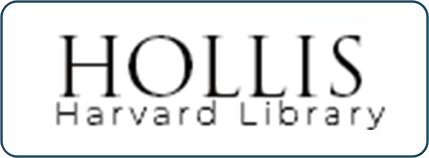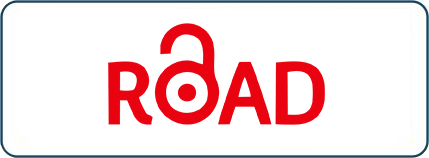Do Tourists Have Better Protection by Taking Travel Takaful? A Comparison in Malaysia
DOI:
https://doi.org/10.33102/jmifr.v19i2.462Keywords:
Travel takaful, travel insurance, travel risk, travel coverage, MalaysiaAbstract
The paper aims to present a comprehensive comparison between Travel Insurance and Travel Takaful development in Malaysia in terms of the product offered and coverage provided to provide better strategies for Travel Takaful market players. The main source of data for this study is the Product Disclosure Sheet (PDS) of Travel Insurance and Travel Takaful Plan, which were found using a systematic review. Using Ansoff Matrix Theories, the study classified the strategies of General Takaful and Insurance operators in managing Travel Protection Plan services and marketing segments. Furthermore, the details of the coverage, price, type of claim and channel to purchase Travel Insurance and Takaful were compared and analysed quantitatively using cross-comparison frequency. Analysis found that, as of August 2021, there were only 15 Travel Takaful Plans available, which are provided by 4 General Takaful operators, as compared to 60 Travel Insurance plans, which are provided by 17 General Insurance operators. This indicates a significant gap between the two types of protection plans. This study also discovered that bank institutions and airlines have collaborated with Insurance and General Takaful operators to create more diverse subscribing platforms for customers by also providing credit card and cashless medical claim methods. Furthermore, extensive coverage for Travel Takaful includes specialities such as Qurban, Badal Haji and Waqf, all of which entice Muslim travellers to purchase Takaful coverage. In addition, some Travel Insurance and Travel Takaful operators have added new coverage for quarantine period expenses in response to the COVID-19 pandemic. Lastly, this study proposes a framework to improve Travel Takaful products offered in the market. The study contributes to the body of knowledge in Takaful by presenting a comparative analysis between Travel Protection in Insurance and General Takaful operators, showing the development of the products and coverage offered by both industries. It is expected to become a significant reference, especially for Takaful market players, in order to build strong strategies toward Travel Takaful subscriptions. strengthening the function of zakat institutions as a socio-economic balancer.
Downloads
References
Abdullah, S. (2012). Risk management via takaful from a perspective of maqasid of shariah. Procedia- Social and Behavioral Sciences, 65(ICIBSoS), 535–541. https://doi.org/10.1016/j.sbspro.2012.11.161
Adom, A. Y., Kofi Nyarko, I., Narki, G., & Som, K. (2016). Competitor analysis in strategic management: Is it a worthwhile managerial practice in contemporary times? Journal of Resources Development and Management, 24, 116–127.
Al-Fadly, A. (2020). Price element of marketing mix: Its effect on customer experience in construction industries. Management Science Letters, 10(15), 3643–3654. https://doi.org/10.5267/j.msl.2020.6.029
Amblee, N. (2016). The impact of eWOM density on sales of travel insurance. Annals of Tourism Research, 56, 137–140. https://doi.org/10.1016/j.annals.2015.10.008
Amirudin, N. R., Nawawi, A., & Puteh Salin, A. S. A. (2017). Risk Management Practices in Tourism Industry - A Case Study of Resort Management. Management and Accounting Review, 16(1), 55–74.
Antai, I., & Mutshinda, C. M. (2021). Competitor identification for sustainable survival strategies: Illustration with supply chain versus supply chain competition. Sustainability, 13(14). https://doi.org/10.3390/su13147861
Bank Negara Malaysia. (2019). Insurance companies & takaful operator: Syarikat insurans & pengendali takaful. https://www.bnm.gov.my/list-of-regulatees
Billah, M. M. (2012). Takaful: (Islamic Insurance) Premium: A suggested regulatory framework. Introduction to Islamic Banking and Finance, 3(1), 127–139.
Chaffey, D. (2002). E-business and e-commerce management (6th ed.). Harlow: Pearson Education.
Constantinides, E. (2014). Foundations of social media marketing. Procedia - Social and Behavioral Sciences, 148, 40–57. https://doi.org/10.1016/j.sbspro.2014.07.016
Farahiyah Izni, W. A. R., & Ahamat, H. (2018). Legal protection of Muslim tourists in Islamic religious tourism in Malaysia: Reality and challenges. International Journal of Engineering & Technology, 7(3.30), 109. https://doi.org/10.14419/ijet.v7i3.30.18212
Faruk, M., Rahman, M, & Hasan, S. (2021). How digital marketing evolved over time: A bibliometric analysis on scopus database. Heliyon, 7(12), e08603. https://doi.org/10.1016/j.heliyon.2021.e08603
Fuduric, M., Varga, A., Horvat, S., & Skare, V. (2022). The ways we perceive: A comparative analysis of manufacturer brands and private labels using implicit and explicit measures. Journal of Business Research, 142, 221–241. https://doi.org/10.1016/j.jbusres.2021.12.033
Ghapa, N., Abdullah Asuhaimi, F., Harun, N., & Ghadas, A. A. Z. (2021). An analysis on the consumer legal protection in umrah package travel industry during COVID-19 pandemic. The Journal of Management Theory and Practice, 2(3), 28–34. https://doi.org/10.37231/jmtp.2020.2.3.173
Hasan, A. A., & Abdullah, N. C. (2015). Compulsory travel insurance in Malaysia: Some regulatory considerations. Procedia - Social and Behavioral Sciences, 172, 344–351. https://doi.org/10.1016/j.sbspro.2015.01.375
Hindirek, H. I., Suzana, M., Satal, B. A., Lorin, V., Murniza, N., Zaidi, M., & Musa, N. M. (2021). Purchase intention of tourism products and services promoted through Facebook among millennial in Malaysia. ESTEEM Journal of Social Sciences and Humanities, 5(1), 88–100. https://ejssh.uitm.edu.my
Husin, M. M., & Rahman, A. A. (2013). What drives consumers to participate into family takaful schemes? A literature review. Journal of Islamic Marketing, 4(3), 264–280. https://doi.org/10.1108/JIMA-04-2012-0019
Hussain, S., Khattak, J., Rizwan, A., & Latif, M. (2013). ANSOFF matrix, environment, and growth- An interactive triangle. Management and Administrative Sciences Review, 2(2), 196–206. http://www.absronline.org/journals/index.php/masr/article/view/102
Jin, G. P., Rahim, F. A., Fong, C. L., & Cheng, T. L. (2020). Malaysian young travellers’ online purchase intention of travel products. Journal of Marketing Advances and Practices, 2(1), 1–12. https://www.researchgate.net/profile/Fitriya-Abd-
Rahim/publication/343063815_Malaysian_Young_Travellers%27_Online_Purchase_Intention_of_Travel_Products/links/5f151e46a6fdcc3ed718abd3/Malaysian-Young-Travellers-Online-Purchase-Intention-of-Travel-Products
Khalil, M., Amir, M., & Abidin, Z. (2018). Factors influencing online buying behaviour of Generation Y. International Journal of Business, Economics and Law, 17(2), 165–171.
Kipley, D., Lewis, A. O., & Jeng, J. L. (2012). Extending Ansoff’s strategic diagnosis model: Defining the optimal strategic performance positioning matrix. SAGE Open, 2(1), 1–14. https://doi.org/10.1177/2158244011435135
Kwaku, A. R., & Antwi, S. (2021). Consumers attraction to purchase online: Website quality as a major influencing factor. Open Journal of Business and Management, 9(3), 1133–1150. https://doi.org/10.4236/ojbm.2021.93061
Lim, Q. M., Lee, H. S., & Har, W. M. (2021). Efficiency, productivity and competitiveness of the Malaysian insurance sector: An analysis of risk-based capital regulation. The Geneva Papers on Risk and Insurance: Issues and Practice, 46(1), 146–172. https://doi.org/10.1057/s41288-020-00173-8
Long, C. S., Hii, J. W. S., Kowang, T. O., Fei, G. C., & Rashid, N. R. A. (2018). Website quality of the travel agencies in Malaysia. Business Management and Strategy, 9(1), 114-135. https://doi.org/10.5296/bms.v9i1.13114
Mary Jennifer, S., & Chandran, A. (2016). Impact of E-travel insurance platforms on customization ventures: An explorative reportage. International Journal on Global Business Management and Research, 5(2), 8–16.
Medlin, C. J., & Ellegaard, C. (2015). Conceptualizing competition and rivalry in a networking business market. Industrial Marketing Management, 51, 131–140. https://doi.org/10.1016/j.indmarman.2015.05.009
Mohamad, N., & Ab Rahman, A. (2014). Tawarruq application in Islamic banking: A review of the literature. International Journal of Islamic and Middle Eastern Finance and Management, 7(4), 485–501. https://doi.org/10.1108/IMEFM-10-2013-0106
Mohd Ashmir Wong, M. S., Daud, M. Z., & Harun, N. H. (2022). The COVID-19 Pandemic and Its Impact on Islamic Tourism in Malaysia. The Journal of Muamalat and Islamic Finance Research, 19(1), 21-33. https://doi.org/10.33102/jmifr.v19i1.406
Mustafa, A. (2018). The effect of marketing strategies on the performance of travel insurance. International Journal of Business and Management, 2(5), 1–8. https://doi.org/10.26666/rmp.ijbm.2018.5.1
Nawi, N. C., Al Mamun, A., Hamsani, N. H. B., & Muhayiddin, M. N. (2019). Effect of consumer demographics and risk factors on online purchase behaviour in Malaysia. Societies, 9(1). https://doi.org/10.3390/soc9010010
Navarra, D., & Scaini, L. (2016). Improvements in the strategic use of the marketing matrices applying dynamics parameters based on time: A better analysis of prospect. European Scientific Journal, ESJ, 12(10), 1-20. https://doi.org/10.19044/esj.2016.v12n10p1
Nazarov, I. I., & Dhiraj, N. S. (2019). A conceptual understanding and significance of takaful (Islamic insurance): History, concept, models and products. International Journal of Innovation Education and Research, 7(4), 280-298. https://doi.org/10.31686/ijier.Vol7.Iss4.1408
Wan Nazjmi, M. F, Haji-Othman, Y., Cheumar, M., & Ahmad, A. (2018). Financial planning
through maqasid shari’ah engineering: A Study on the takaful products development. Academic Journal of Current Researh, 5(12), 56-62.
The Global Muslim Travel Index (GMTI). (2018, April). Master card. https://www.crescentrating.com/reports/mastercard-crescentrating-global-muslim-travel-index-gmti-2018.html
The Global Muslim Travel Index (GMTI). (2019, April). Master card. https://www.crescentrating.com/reports/mastercard-crescentrating-global-muslim-travel-index-gmti-2019.html
Sama, R. (2019). Impact of media advertisements on consumer behaviour. Journal of Creative Communications, 14(1), 54–68. https://doi.org/10.1177/0973258618822624
Sin, S. S., Nor, K. M., & Al-Agaga, & A. M. (2012). Factors affecting Malaysian young consumers’ online purchase intention in social media websites. Procedia - Social and Behavioral Sciences, 40, 326–333. https://doi.org/10.1016/j.sbspro.2012.03.195
Rangaswamy, A., Moch, N., Felten, C., van Bruggen, G., Wieringa, J. E., & Wirtz, J. (2020). The role of marketing in digital business platforms. Journal of Interactive Marketing, 51(1), 72–90. https://doi.org/10.1016/j.intmar.2020.04.006
Verhoef, P. C., Broekhuizen, T., Bart, Y., Bhattacharya, A., Qi Dong, J., Fabian, N., & Haenlein, M. (2021). Digital transformation: A multidisciplinary reflection and research agenda. Journal of Business Research, 122, 889–901. https://doi.org/10.1016/j.jbusres.2019.09.022
Wan Ahmad, W. M., Abd. Rahman, A., Ali, N. A., & Che Seman, A. (2004). Riba dan gharar dalam insurans: Satu analisis fiqh. Jurnal Fiqh, 2(1), 97–118. https://doi.org/10.22452/fiqh.vol2no1.5
Yeshitila, D., Kitaw, D., Jilcha, K., & Muchie, M. (2020). Situational and mixed business strategy analysis for market competitiveness: An exploration in context of Africa. International Journal of Global Business and Competitiveness, 15(2), 106–120. https://doi.org/10.1007/s42943-020-00014-4
















